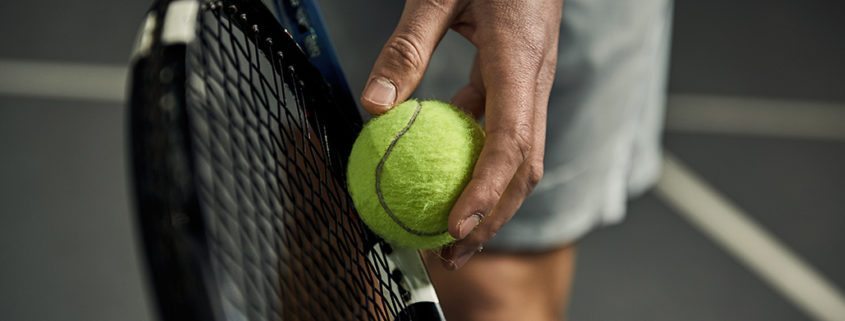Tennis and Back Pain
Tennis can be hard on a player’s body. While most people associate tennis with injuries to the wrist and arm—hence the term, “tennis elbow”—low back pain is also very common among tennis players.
How Does Tennis Cause Back Pain?
Low back pain associated with tennis can have various causes:
- The hard surface of the court and uneven nature of the sport, which places most of the burden on one side of the body, can cause aches and pain in the neck, shoulders, and back.
- Bad posture is a common culprit of back pain for tennis players. Many players keep their heads forward with their upper backs rounded, placing undue stress on the lower back.
- Forehand and backhand shots require a large amount of trunk rotation, which twists the spine.
- The tennis serve hyperextends the lower back and can compress lumbar discs. This hyperextension can stress the small joints in the spine, lumbar discs, and muscles, ligaments, and tendons around the spine.
- During the game, back muscles must support continual and sudden forward and lateral movements. These start-and-stop motions are, of course, hard on the back.
What Symptoms Should Tennis Players Watch For?
Back pain symptoms experienced by tennis players include a sudden and sharp, or a persistent, dull pain in the lower back. The pain is sometimes only on one side and tends to worsen with movement and activity. The pain may also radiate to the hips, buttocks, or back of the thigh.
How Can I Prevent Back Pain While Playing Tennis?
Prevention goes a long way in avoiding any kind of injury, and following these tips can decrease your chances of back injury when hitting the tennis court:
- Get fitted by a professional for a racket appropriate for you. A more flexible racket requires more trunk rotation than a stiffer racket with less tension in the strings. Also make sure the racket is the right size for you, as an improperly sized racket can place undue stress on the elbow and/or back.
- Consider using a slice serve rather than a kick serve to reduce the degree of back arch.
- Use proper form—bending the knees and holding in the abdominal muscles. Watch your posture, making sure to keep your shoulders back and avoiding rounding your upper back. It may be beneficial to have a tennis professional check your form and posture, especially if you are new to the game. A pro can teach proper form and make suggestions on how to avoid back injuries.
- Exercise your core regularly. As in all sports, strong core body muscles are essential and can help prevent injuries to other parts of the body, including the back.
- Wearing the right tennis shoe can help you avoid back injury. Look for shoes with good shock absorption and good traction.
- As with any physical activity, be sure to stretch well both before and after you play tennis to avoid tight or pulled muscles.



